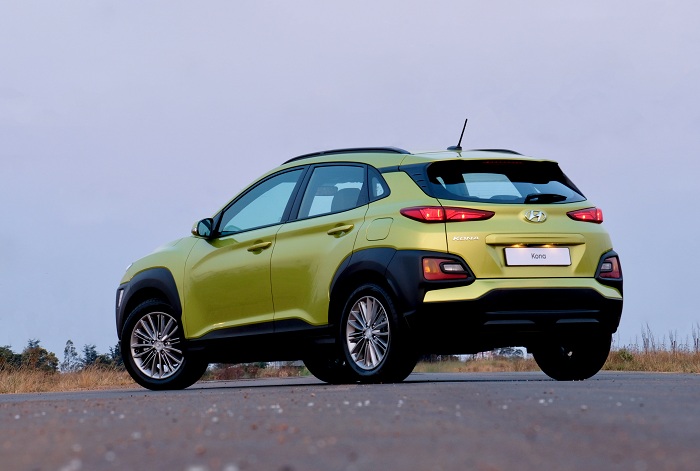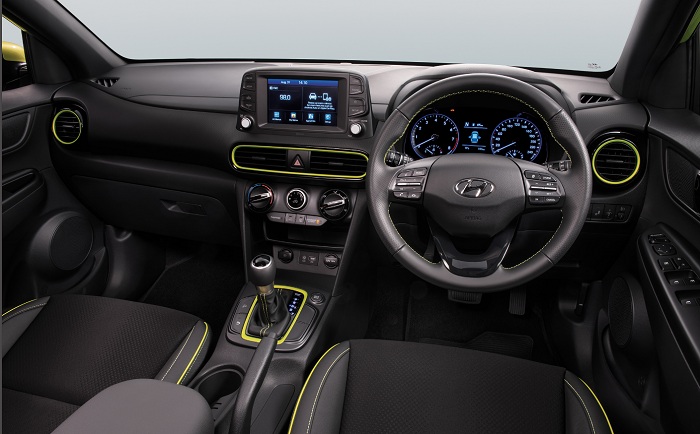I travelled to the North of Gauteng recently to sample the latest addition to an ever crowding part of the local market.
Crossover styling
With the meteoric rise of SUVs and crossovers, it stands to reason that manufacturers will look to plug as many niche markets as possible with high-riding faux off-roaders both big and small, and with crossover characteristics. The Kona is similarly priced to the top-spec Creta and the entry-level Tucson, but is rather different in terms of its appeal so as to not impede upon their sales.

With styling being an important feature with competitors as modern as the Toyota C-HR and the recently updated Honda HR-V, the Peter Schreyer-penned Kona certainly makes a visual statement. Despite being a front-wheel drive-only model locally, the Kona certainly looks the part when it comes to off-road aesthetics.
Up front, the LED daytime running lamps sit above the low-mounted headlamps, while the front grille is divided into three pieces for a front-end design that is certainly far removed from the brand’s relatively conservative local offerings.
Similarly, the side profile features plastic cladding at the lower end along with a sloping roofline. The rear end is dominated by massive fog lamps which make the taillamps appear small by comparison.
Interior

The interior is likely the most modern and up-to-date Hyundai space I’ve experienced, with a more liberal use of colour, a simplistic layout free from too many buttons, and a fit-and-finish that is just about on par for the segment in which it competes. A highlight of the interior is certainly the seven-inch touchscreen infotainment system with Apple CarPlay, Android Auto, Bluetooth and USB, as well as AUX input along with the six-speaker sound system.
I am pleased to announce that the Kona was the first car in which I could make use of Android Auto, thanks a to a well-respected local motoring publication releasing a clever method with which to make the feature work. It really integrates your smartphone with the vehicle and certainly adds another dimension to vehicle ownership and user convenience.
Under the bonnet
For now, the Kona is only offered with petrol power. In an exciting twist, Hyundai has, for the first time, introduced its three-cylinder 1.0-litre T-GDI turbo-petrol engine to the local model. The small motor produces 88kW/172Nm and will sprint to 100km/h in 12-seconds and consume unleaded at a claimed 6.8-litres/100km.
Although the small motor proved adequate when it came to hauling the 1 233kg Kona along, it still came with a hint of turbo-lag and will likely sell in smaller numbers, due to being equipped only with a six-speed manual gearbox.
The more traditional offering displaces 2.0-litres without any forced assistance, and produces 110kW/180Nm. Serving as the flagship engine option, the naturally breathing motor is mated to a six-speed automatic gearbox, and while performance is not exactly brisk, is relatively fuss-free with the Kona sprinting from 0-100km/h in 10 seconds, while the claimed fuel consumption is 7.2-litres/100km.
While the naturally aspirated unit is likely to be the pick of the range by virtue of its gearbox option, it does tend to feel a bit lazy and is certainly closer to 8.0-litres/100km in terms of fuel consumption.
One spec level
Both Kona models come in Executive trim, meaning that 17-inch alloy wheels, body coloured door handles and bumpers, a boot spoiler, imitation leather seats and gear lever with colour stitching, rear Park Distance Control with a reverse camera, Hill Start Assist, electric mirrors, cruise control, electric windows all round, projector headlights and auto lock/unlock doors are all standard features.
Service plan and warranty
All Kona models come with a five-year/150 000km warranty with additional two-year/50 000km mechanical warranty, as well as five-year/90 000km service plan as standard.
Pricing
Kona 1.0 T-GDI Executive - R379 900
Kona 2.0 Executive AT - R399 900
















